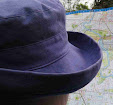Medals for national service returned
3 weeks ago
 |
Guard, Isolation Camp, Ascot Vale, 29 September 1916. Quite prepared to shoot any measles outbreak. Courtesy of drakegoodman on Flickr.
|
 |
| From the Thuillier collection of glass plate negatives. AWM P10550.128 |
"Every Saturday, at 5 p.m., every man in camp, whether sick or on duty, receives the following tea: -For the hospital wards -jelly, 2 slices cream sandwich, 1 rainbow,1 Swiss roll, 1 diamond sponge (special diet). Men in camp-Each 1 hot meat pie. 1 slice Vic. sandwich, 2 pasties, 2 buttered scones, 1 cake, tea, milk and sugar. The average strength of the camp is 150 men. Cost of tea, 6d per man.
Every house surrounding the camp has adopted a soldier for Saturday tea, and is guaranteeing it every week till the war ends. No less than the following permanent donations (150 in number, and sundries, bringing it up to 180 in three weeks) have been received, and anyone wishing to do likewise may leave donations either at the Isolation Camp, in charge of guard at gate, or Mrs. McCreary, Puckle st.; Mrs. Guest, baker, Railway Crescent, Ascot Vale; or Mrs. W. T. Osborne. "Corneville." 19 Francis street. Ascot Vale.For further information about the work of the Cheer-up Brigade, and the women who worked with Mrs Osborne, go to The Empire Called website.
PATRIOTIC (1917, May 10). The Essendon Gazette and Keilor, Bulla and Broadmeadows Reporter (Moonee Ponds, Vic. : 1914 - 1918), p. 3 (Morning). http://nla.gov.au/nla.news-article74602492
